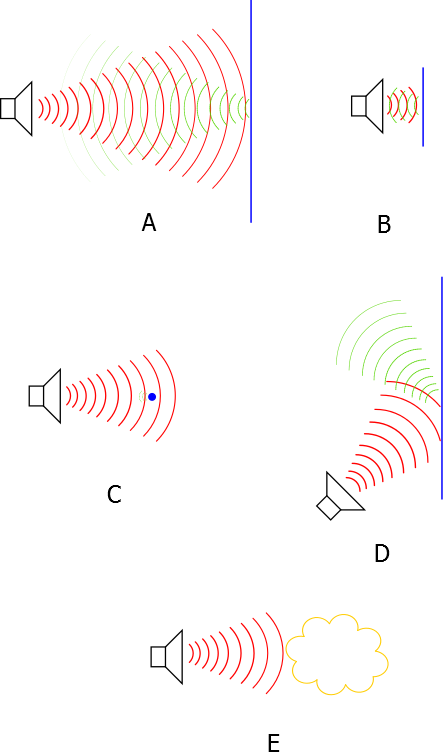Situational Limitations
While measuring distance using an ultrasonic transceiver is quite effective, there are some situational requirements. Ideally, the barrier, the distance to which is to be measured, should be a solid, flat surface perpendicular to the ultrasonic beam. It should have a sufficiently different acoustic attenuation to that of air so that enough of the ultrasonic burst is reflected in order to be received by the transducer. It should also be within the operational range of the ultrasonic transceiver. The figure below (Ineffective Ultrasonic Distance Measurement Situations) depicts some situational limitations of ultrasonic distance measurement. In sub-figure A, the distance to the barrier is too far away and the reflected signal is too attenuated to be effectively received. Sub-figure B shows the barrier too close, meaning the transceiver is still in Transmission mode when the reflected signal should be received. In sub-figure C, the object is too small, and not enough of the ultrasonic burst is reflected. Sub-figure D shows the effect of an angle not perpendicular to the ultrasonic beam so that it is reflected away from the transceiver. In sub-figure E, the object is too soft and has an attenuation coefficient similar to that of air, so the ultrasonic beam is absorbed rather than reflected.

Environmental Limitations
Additionally, ultrasonic distance measurement is highly affected by temperature and humidity, which changes the speed of sound in air. This, in turn, will contribute to large variations in measurements taken for the same distance, introducing substantial errors. Air currents can also contribute to error, in that they can act as invisible barriers that will reflect ultrasonic bursts.
It is possible to account for errors introduced by changing temperature to a certain degree. This can be done by taking a temperature measurement at the same time as a "time of flight" measurement and considering both in the distance calculation.